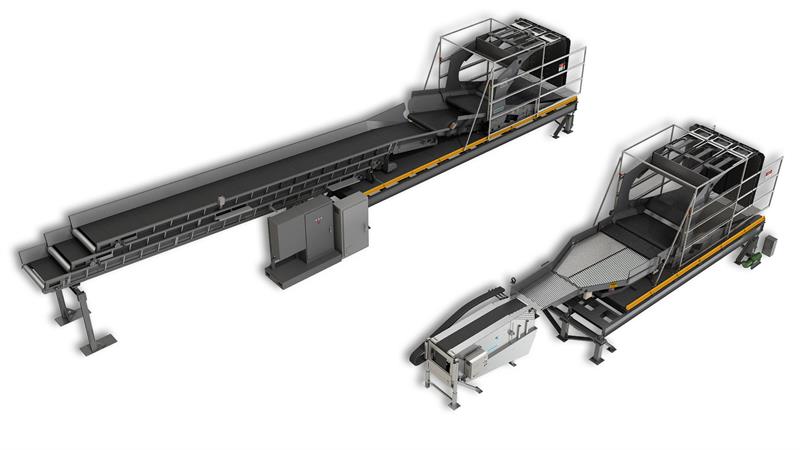
Every minute counts in the parcel handling chain, and one of the main contributors to slower processing at parcel hubs is the discharging of trucks – demand which is stretching manual unloading processes to their limits, as the trucks arrive at higher and higher frequencies.
RUBUS uses a unique method of unloading parcels fully automatically and at high speed with the aid of belts. The system can be configured for bulk or stream flow and allows a throughput of up to 25,000 items per hour. This rate can be controlled to match available system capacity from a central control station.

To enable compatibility with RUUS, a low-cost stationary belt kit is installed on the floor of a trailer or container. While RUBUS draws itself along the belt to the end of the trailer or container, it unloads parcels and packages. When RUBUS is not being used for unloading, such as in the case of pallet loads, the belt can be stowed away. Safety benefits are also gained because operators are stationed at a control panel outside the container, rather thn in the unloading environment.
“Siemens' RUBUS optimises the parcel unloading process fundamentally,” said Michael Reichle, CEO of Siemens Logistics. "With this new technology, unloading is possible without any manual intervention. It is therefore up to 20 times faster than before. With RUBUS, we are setting a milestone in innovations and support our customers in significantly increasing their productivity.”
Gert Seidel, CEO of Siemens Logistics in the US, also commented. “RUBUS has been successfully integrated into existing facilities in the USA and has shown top performance during operations. Additional benefits are a much faster trailer turn around, no physically demanding manual unloading, and facilities can be designed with a smaller physical footprint and significantly fewer inbound dock doors.”
